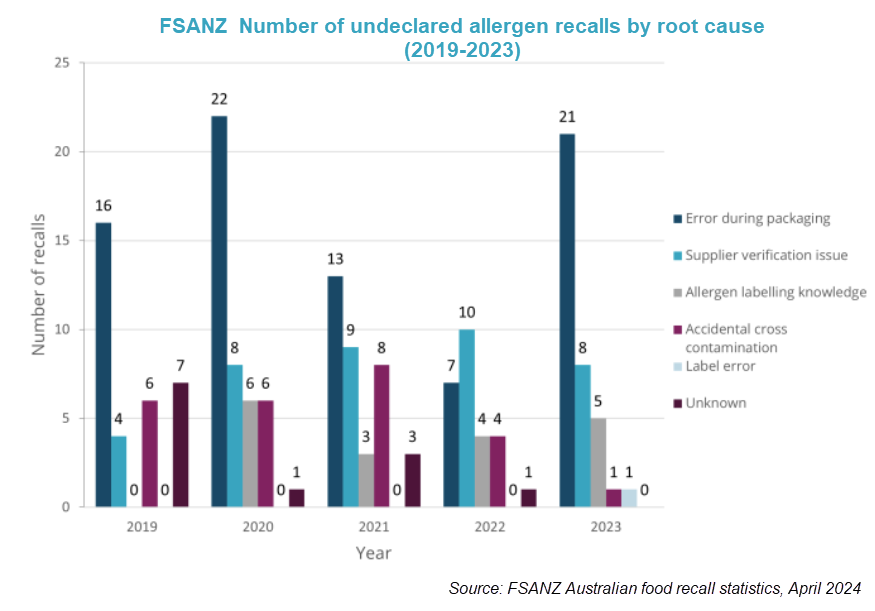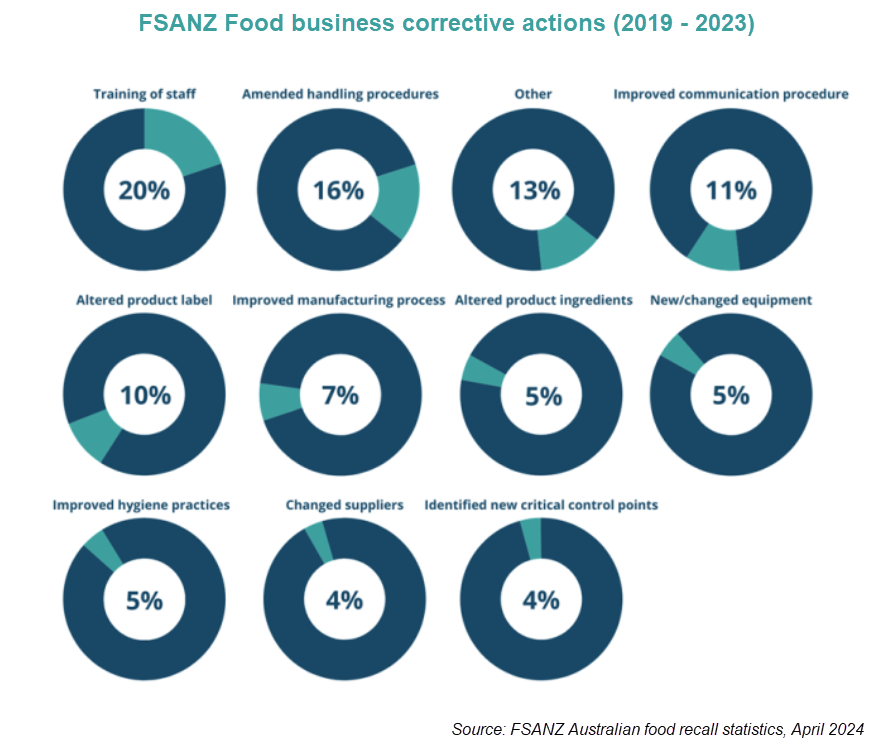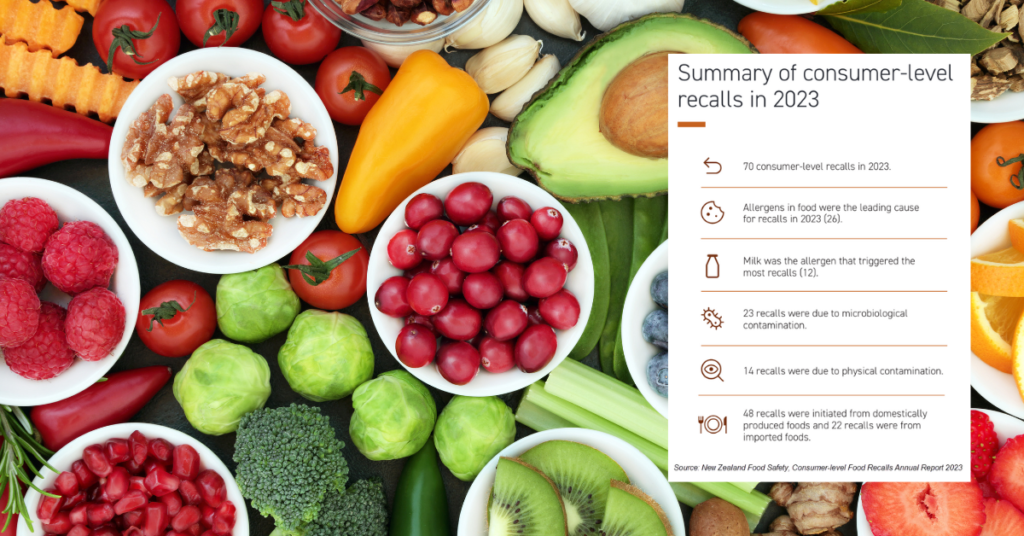2023 Australian food recall statistics released
Published Date
Category
Food Standards Australia New Zealand have recently released their 2023 Food recall report. There are lots of little nuggets that can help give insights into the types of food recalls that have occurred in the past 5 years. One thing that I did find very interesting is the reporting of ‘why’ or the declared ‘root-cause’ of these recalls.
Quick Stats for 2023
Number of food recalls in 2023 = 87
Reasons for the food recall
- Undeclared allergen = 41
- Microbial = 23
- Foreign Matter = 7
- Secondary fermentation = 3
- Labelling = 7
- Biotoxin = 2
- Other = 2
Note: The numbers don’t add up here so not to sure what is going on with the reporting by FSANZ.
Allergen Related Recalls
Allergen related recalls could be categorized into five (5) root causes. These were:
- Accidental cross contamination – Contamination of either raw ingredients or during the final production process.
- Allergen labelling knowledge – A lack of allergen labelling awareness by staff or the misinterpretation of standards.
- Error during packaging – Errors that occur during packaging. For example, a product being packaged in the wrong packaging or a product labelled with the wrong labelling.
- Label error – Examples include labelling errors resulting from the incorrect translation of ingredients, or ingredients being reformulated and the labelling not reflecting the change.
- Supplier verification issues – The supplied ingredient changes were not communicated.
- Unknown – Unable to determine what caused the issue at the time of recall.

Corrective actions
Interestingly the report documents the corrective actions taken by companies that had a food recall. When a food business has a recall in Australia they are required to report the corrective actions taken. Over the past 5 years (2019 – 2023) the most common corrective actions taken were:
- Training of staff
- Amending handling procedures
- Improved communication procedures
- Other (which includes increased testing and ceasing production or supply).




